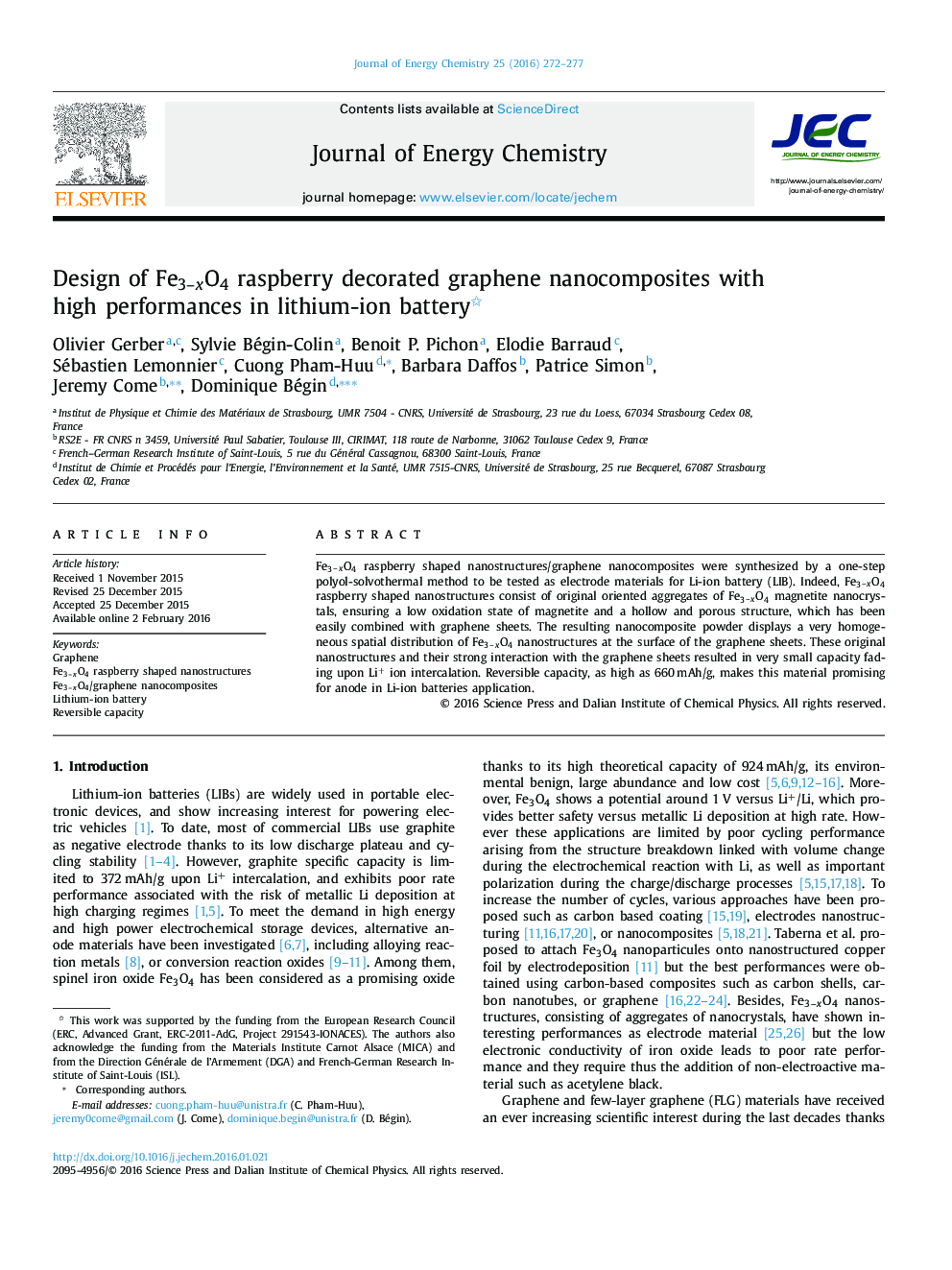| Article ID | Journal | Published Year | Pages | File Type |
|---|---|---|---|---|
| 63721 | Journal of Energy Chemistry | 2016 | 6 Pages |
Fe3–xO4 raspberry shaped nanostructures/graphene nanocomposites were synthesized by a one-step polyol-solvothermal method to be tested as electrode materials for Li-ion battery (LIB). Indeed, Fe3–xO4 raspberry shaped nanostructures consist of original oriented aggregates of Fe3–xO4 magnetite nanocrystals, ensuring a low oxidation state of magnetite and a hollow and porous structure, which has been easily combined with graphene sheets. The resulting nanocomposite powder displays a very homogeneous spatial distribution of Fe3–xO4 nanostructures at the surface of the graphene sheets. These original nanostructures and their strong interaction with the graphene sheets resulted in very small capacity fading upon Li+ ion intercalation. Reversible capacity, as high as 660 mAh/g, makes this material promising for anode in Li-ion batteries application.
Graphical abstractFe3-xO4 raspberry nanostructures/graphene nanocomposites synthesized by a one-step polyol-solvothermal method displaying high efficiency for Li-ion battery applications (LIB). Figure optionsDownload full-size imageDownload as PowerPoint slide
